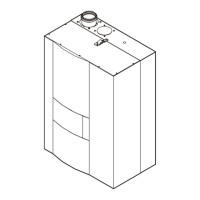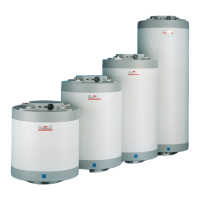0$,17(1$1&(
6(59,&,1*7+(+($7(;&+$1*(52)7+(%2,/(56+(//
The heat exchanger must be cleaned once the bur-
ner has been disassembled (paragraph 1 - section
X - MAINTENANCE).
- Sprinkle the heat exchanger with water. The wa-
ter is evacuated through the condensate evacua-
tion siphon,
- when reassembling the burner onto the boiler
shell check the correct positioning of the gasket.
&+(&.,1*$&&(6625,(6
- Check that the safety and control devices (3 bar
safety valve, air bleed, safety control box, etc.)
are operating properly.
- Check that the condensate drain siphon is clean
(remove it, clean it, replace it and then fill it with
water).
- Also check that neither the installation nor the
boiler present any water or fuel leaks (leaks may
produce a risk for safety and shorten the lifes-
pan).
- When it is frequently necessary to add water to
maintain pressure in the installation, even though
no leaks have been discovered, perform an ex-
pansion tank check (paragraph 4 - section X -
MAINTENANCE).
(;3$16,219(66(/35(,1)/$7,2135(6685(&+(&.
- Drop the pressure in the heating installation by
opening the drain cock or the safety valve (pres-
sure gauge reading under 0.5 bar).
- Check the pressure in the expansion vessel and
if necessary bring it back up to pressure, or repla-
ce it if the membrane is punctured (water present
in the inflating valve).
- To optimise the efficiency of the vessel:
• adjust its pre-inflation pressure in line with the
installation. It must correspond to the static
height of the installation (H) expressed in bars
(height between the highest point of the instal-
lation and the expansion tank, with 10 metres
= 1 bar),
• adjust the filling pressure of the installation to a
value of over 0.2 bar above the pre-inflation
pressure of the vessel (after totally bleeding
the air from the installation).
)LJ
H
Water inlet
volume
Inflating valve
Pressure rises as the
air is compressed
Max vessel
volume
Membrane
